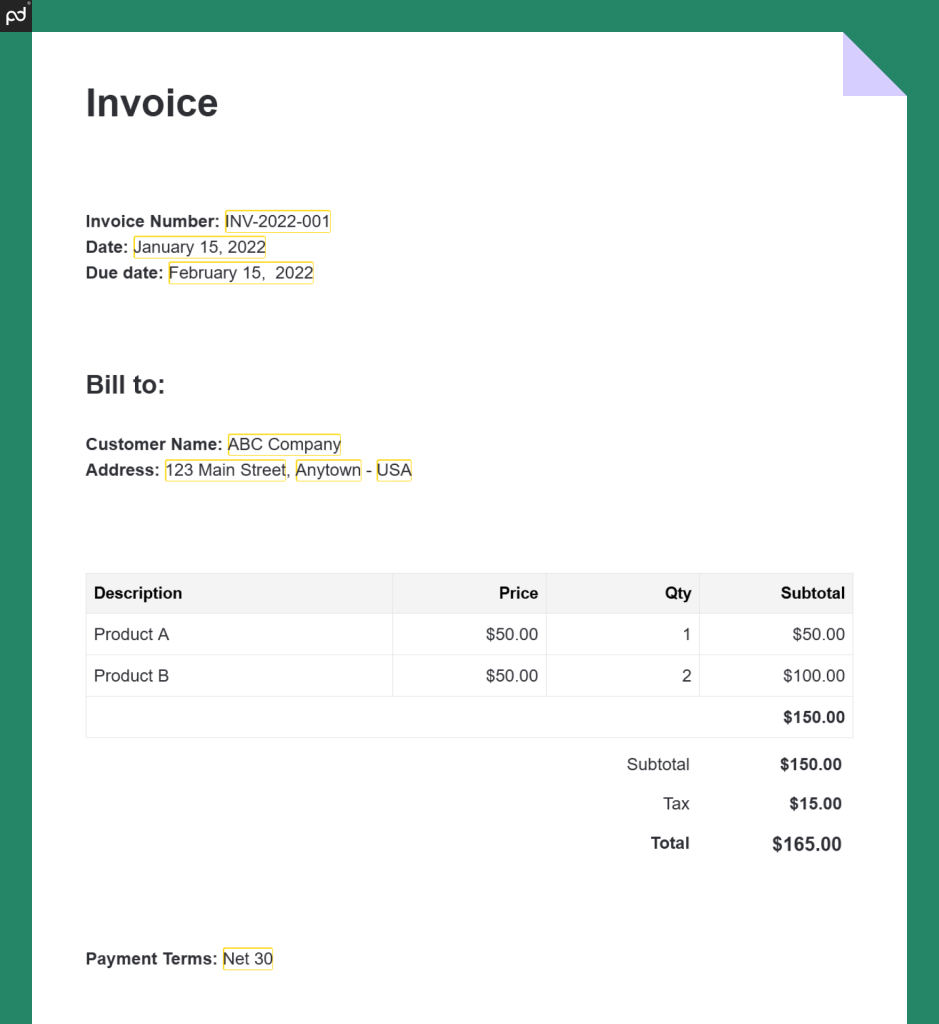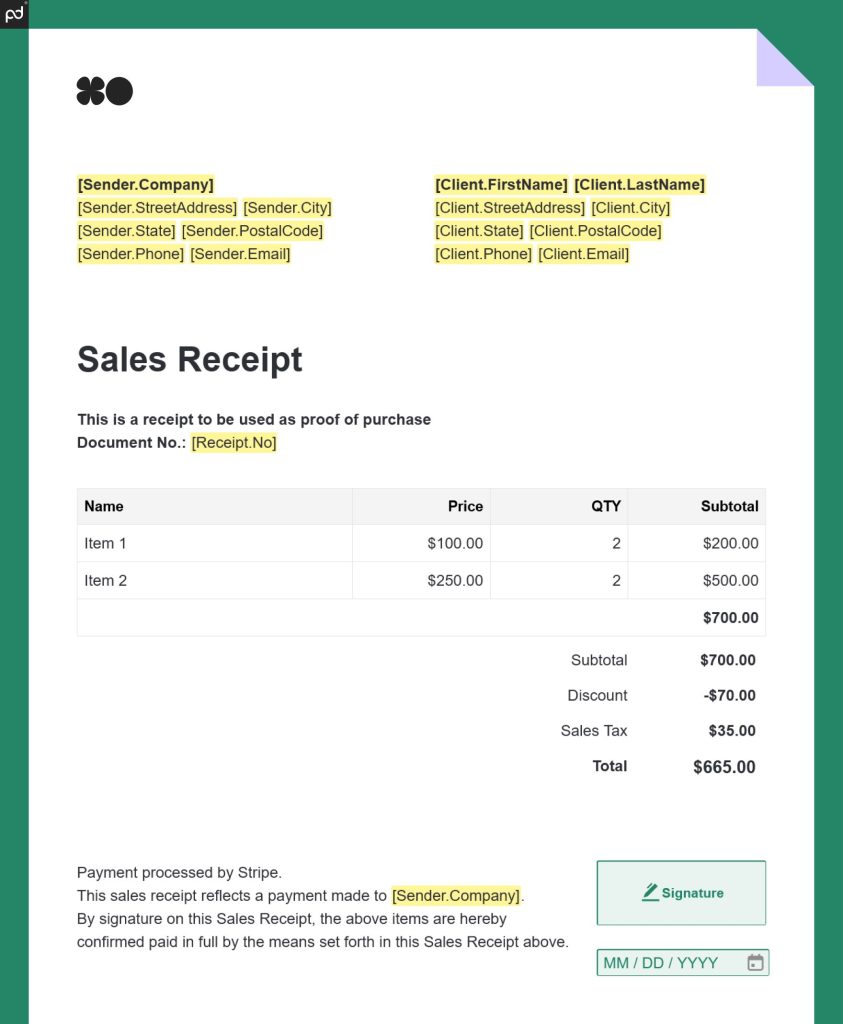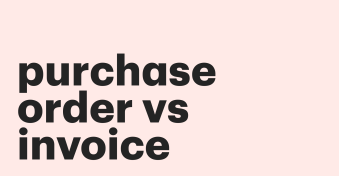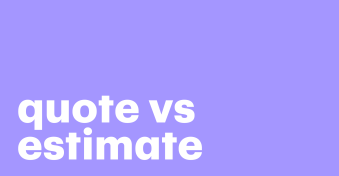Businesses use a variety of documents to take orders, process transactions, and do various other bookkeeping tasks.
Invoices and receipts are some of the most common documents used by businesses.
So, what does an invoice vs receipt mean for you?
Key takeaways
- Invoices and receipts share similarities, such as prices and itemized lists, but they differ in purpose and timing.
- Invoices initiate a transaction, while receipts finalize a transaction.
- Invoices are issued after delivery, while receipts are issued after payment.
- Use invoice and receipt templates with PandaDoc to streamline document generation.
What is an invoice
An invoice is a document that businesses issue after selling goods or services.
They send invoices to customers with crucial information, such as the goods provided and the amount owed.
So, in simple terms, what is an invoice? Invoices are mainly issued to collect payment.
However, invoice types vary depending on the nature of the transaction.
A proforma invoice is like a preliminary bill of sale or an estimate.
Customers order in advance and receive an invoice describing the services, items, and price.
Unlike a general invoice, you send a proforma invoice before fulfilling an order.
Other types of invoices include:
- Credit invoice: Used to show a client a refund or discount or to correct previous invoice issues.
- Debit invoice: Issued when the amount owed is greater than that of the original invoice.
- Commercial invoice: Includes information for international customs, such as weight and volume.
- Timesheet invoice: An invoice with prices based on units of time.
- Interim invoice: Used in B2B and for bigger purchases paid in installments.
- Past due invoice: Issued when the original invoice is past its due date.
For information on how to write an invoice, see here.
Example of an invoice
An invoice should include key details such as the invoice number, issuance date, due date, billing and shipping addresses, itemized list of products or services provided with descriptions, quantities, unit prices, and total amounts, subtotal, taxes, if applicable, any discounts or credits applied, and the total amount due.
So, what does a basic invoice look like?
Take a look at this example of an invoice.

This visual example includes an invoice number, date, due date, billing information, itemized list of products or services, subtotal, tax, total amount due, and payment terms.
Here are some examples of bespoke, ready-made invoices:
- Sales invoice
- Freelance invoice
- Proforma invoice
- Commercial invoice
- Invoice with electronic signature
PandaDoc sales invoice software lets you generate any document you need quickly.
Create, send, track, and securely eSign any sales invoice in minutes.
What is a receipt
A receipt is proof of payment issued to customers and proof of sale for your business.
You issue a receipt after receiving payment, which finalizes a contract of sale.
A receipt contains relevant information for individuals or businesses that they can use for accounting purposes and proof of purchase.
Businesses also use receipts to claim back tax on any expenses.
Receipts usually include information such as:
- Company name and logo
- Business address
- Date and time of day
- Itemized list and prices
- Amount paid, including sales tax
Example of a receipt
Okay, so what is the end product of your receipt creation journey?
Let’s take a look at an example of a sales receipt.

We’ve shown you how to create simple receipts for business use.
There’s a much easier way to achieve seamless receipt generation—PandaDoc.
With our document workflow management software, you can create custom receipts that fit your business.
PandaDoc lets you create reusable templates to store and manage electronically.
You can send customers a copy of the receipt with just the click of a button.
To get your business started with professional-looking receipts, give one of our receipt templates a whirl.
What is the difference between an invoice and a receipt
Is an invoice the same as a receipt? Short answer is no.
An invoice is a document issued by a seller requesting payment for goods or services, while a receipt is a document acknowledging that payment has been received.
So, what’s the difference between an invoice and a receipt?
Let’s take a look at the differences and the similarities.
| Invoice | Receipt | |
|---|---|---|
| What is it? | Issued to customers to notify them how much they must pay. | Issued to customers as proof of purchase. |
| Use cases | You can issue invoices for recurring business or single transactions. | You issue a receipt for one transaction only. Each time a customer makes a payment, you must generate a new receipt. |
| Time | Initiates the sale after delivering goods or services. | Finalizes a sale after the client pays what’s owed. |
| Benefits | Helps with accounting and tax purposes. Invoice totals contribute to accounts receivable and forecasting. | Gives buyers proof of payment for refunds and warranties. A receipt also works as proof for claiming tax deductions. Sellers can use receipts as proof of payment/income. |
When to use an invoice vs receipt
Okay, so now you’re wondering when to use invoices vs receipts.
Let’s explore some reasons why you might use each document.
Use an invoice if:
- You’re a freelancer performing a service
- You’re a supplier and have shipped goods
- You’re the owner of a company that has fulfilled a service contract
- You’re in ecommerce and actively fulfill customer orders
- You’re sending a payment reminder to a business or an individual
- You’re sending a late payment invoice to a business or an individual
Use a receipt if:
- A company or individual has paid the amount due on an invoice
- A sale contract has been fully paid
- A recurring payment for services or goods on a larger contract has been made
- A customer refund has been processed and paid out
- A successful online payment to your business for goods and services was processed
Can an invoice be used as a receipt
An invoice isn’t a valid substitute for a receipt. These documents contain similar information but have different purposes.
An invoice is a request for payment issued by the seller. It’s a record of services rendered or an order fulfilled, not proof of payment.
You can think of an invoice like a bill you receive in a restaurant. It shows what you ordered and how much you owe.
Now, you couldn’t show the bill to the restaurant manager as proof of payment.
If that were the case, every restaurant would be out of business by now!
From a legal standpoint, you will not be able to use an invoice as a receipt replacement for tax deductions.
Likewise, a customer cannot request a refund by referring to an invoice.
Reduce your payment time and increase your close rate with PandaDoc software
Invoices and receipts are all part of doing business.
They help you initiate and complete sales that keep your business turning over.
Speaking of turnover, you need more time to grow your business and less time spent on admin and payment collection.
Use payment solutions software with PandaDoc. Collect payments straight from your sales contracts and invoices.
Our platform helps you reduce average payment time and increase close rates. We offer payment processing with EMV 3DS.
Electronic signatures ensure customers pay invoices quickly.
You can generate receipts for the relevant parties once they’ve paid. You can even sign invoices online.
Request a payment solution demo today and see how easy it is to use PandaDoc!
Frequently asked questions
-
Whether you need an invoice or receipt depends on your business. Companies generally use invoices when a service or product is delivered before receiving payment. In some instances, a bill will suffice.
A receipt may or may not be mandatory depending on your legal jurisdiction. However, it’s best practice to issue receipts whenever someone makes a payment to your business.
-
No, an invoice doesn’t mean a client has paid. An invoice is a payment request. It means you’ve rendered goods or services. The receiving party now needs to pay. For accounting purposes, unpaid invoices factor into your accounts receivable total.
Only a receipt of payment guarantees you’ve processed and received payment.
-
An invoice contains many details that are similar to those on a receipt. However, when it comes to invoice versus receipt documents, an invoice isn’t valid proof of purchase. An invoice is a record of an unfinished transaction. It’s not normally sufficient as proof of payment by the customer.
-
You send an invoice to request a payment. Invoice payment terms outline the conditions and stipulations of that payment. Terms include the accepted payment methods. Equally as important, the payment due date lets the customer know how soon they must pay.
Other payment terms include penalties and late fees for failure to pay.
-
Usually, you can’t claim expenses without a receipt. The Internal Revenue Service does allow for some tax deductions without a receipt by way of credit card or bank account records. However, this is a difficult and cloudy course to navigate.
You can prevent questions and audit requests using receipts as proof of purchase.
Disclaimer
PandaDoc is not a law firm, or a substitute for an attorney or law firm. This page is not intended to and does not provide legal advice. Should you have legal questions on the validity of e-signatures or digital signatures and the enforceability thereof, please consult with an attorney or law firm. Use of PandaDoc services are governed by our Terms of Use and Privacy Policy.


